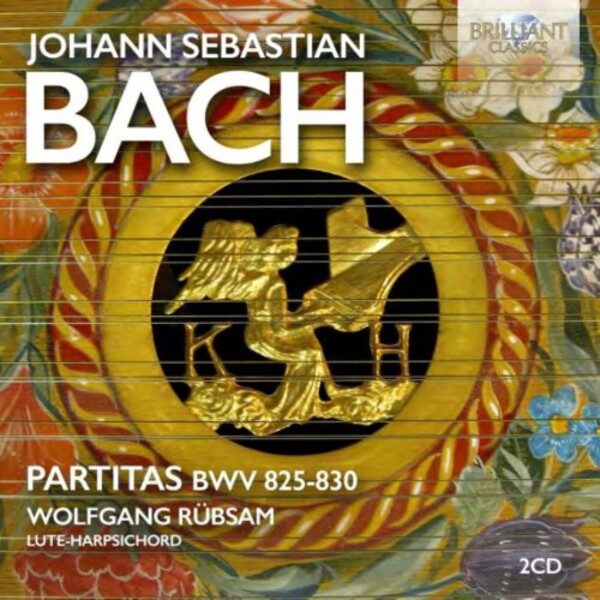
JS Bach - Partitas BWV825-830
£11.35 £8.50
save £2.85 (25%)
special offer ending 24/04/2024
In stock - available for despatch within 1 working day
Despatch Information
This despatch estimate is based on information from both our own stock and the UK supplier's stock.
If ordering multiple items, we will aim to send everything together so the longest despatch estimate will apply to the complete order.
If you would rather receive certain items more quickly, please place them on a separate order.
If any unexpected delays occur, we will keep you informed of progress via email and not allow other items on the order to be held up.
If you would prefer to receive everything together regardless of any delay, please let us know via email.
Pre-orders will be despatched as close as possible to the release date.
Label: Brilliant Classics
Cat No: 96464
Format: CD
Number of Discs: 2
Genre: Instrumental
Release Date: 18th November 2022
Contents
Artists
Wolfgang Rubsam (lute-harpsichord)About
The name Sinfonia for the first movement in the Partita in C minor is redolent of opening cantata movements and the dotted rhythm of a French overture. The Grave adagio however, is not followed by the fugal fast section you would expect here. This approach was carried out more consistently and stylistically in the Partita in D major, although there the fast section approaches the form of a concerto. Instead, the Grave adagio of the Partita in C minor is followed by a sonata-like movement with an arabesque effect in the upper voice, followed by a lively fugato. As a result, the piece appears in three parts. In contrast, the opening Fantasia in the Partita in A minor is more akin to an invention, showing similarities with the opening section of the second English Suite of the same key. Moreover, since the 17th century, the distinction between the terms ‘Praeludium’ and ‘Praeambulum’ was insignificant. Yet Bach’s delicately sculpted Praeludium in the B flat major Partita, is stylistically very different from the concerto-like Praeambulum of the Partita in G major. Lastly, the Toccata in the Partita in E minor offers rhapsodic-improvisatory sections framing a fugue after the style of Froberger, whose works for keyboard instruments must have been known to Bach.
The original dance movement went through a functional transformation to become a character work of sorts; in this way, Bach made one of the first contributions to this later extremely popular style of keyboard music. Wolfgang Rübsam, an experienced and internationally renowned Bach interpreter, contrived to record all the Partitas on the lute-harpsichord. This was inspired by an estate inventory of 1750, which shows Bach owned at least two lute-harpsichords. The suggestion proved to be especially fortunate and is still a rarity among today’s publications. For the Partita movements written in the ‘style luthé’, such as the Allemande of the Partita in B flat major, the lute-harpsichord is perfect.
The poetic tone of the creation from Keith Hill’s studio, sonorous and noble in the lower registers and brilliant in the higher registers, enters into an almost perfect synthesis with Rübsam’s rhetorically sensitive playing, which is characterised by great ornamental and improvisational ingenuity. The selected temperament of Vallotti, with its tuning system approaching pure thirds, does the rest.
Error on this page? Let us know here
Need more information on this product? Click here